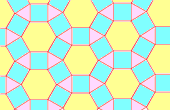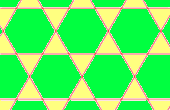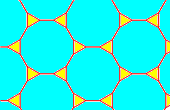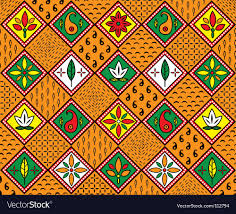Week 12: November 16 through 20, 2020
- Daisy Ross

- Nov 16, 2020
- 4 min read
Updated: Nov 19, 2020
Have you ever noticed the different patterns all around you. There are patterns in our clothes, tiles, quilts and in works of art housed in museums across the world. These patterns are part of what we call Tessellations. Tessellations are tiling or flat surfaces that cover a plane using one or more geometric shapes, called tiles, with no overlaps and no gaps. In mathematics, tessellations can be generalized to higher dimensions and a variety of geometries. A periodic tiling has a repeating pattern.
Tessallation Examples:



Tessallations Are Important in Math
Tiles used in tessellations can be used for measuring distances. Once students know what the length is of the sides of the different tiles, they could use the information to measure distances. ... Tiles that are arranged so there are no holes or gaps can be used to teach students that area is a measure of covering.
Monday, November 16, 2020
Tessellations Across A Nation

What is a tessellation?
Tessellation is when a surface is covered with a pattern of flat shapes so that there are no overlaps or gaps.
A regular tessellation is a pattern made by repeating a regular polygon.
In a regular tessellation, each vertex is identical.

Create your own tessellations using the Tessellation Artist tool. In Math, tessellations rely on repeated distances between forms, repeated angles that cover the surface of a drawing area. In complex tessellated patterns there may sometimes be different shapes however they must follow the same technique. These shapes repeat without gaps and without overlapping, (although sometimes the look may appear to have a gap but it must be a part of the pattern). Here
What patterns do you see in these tessellations? What makes most of these designs a tessellation?
Product: Please use the pdf to create your own tessellation. Share it in the Family World School group on Facebook or in the comments section below.
Tuesday, November 17, 2020
Tessellations in Art
Try your hand at creating your own artistic creation using a shape of your choice. Materials you may need is paper, pencil, ruler, tape, colored pencils or markers. Use your favorite shape that you have on hand or draw your own tessellation, cut it out and use it as your tracer in order to keep the shapes the same. Give it a try! Share it with us here in Family World School or on our FB page.
Differentiation: Use larger shapes for students with fine motor difficulties and/or assist them in cutting or use shapes that are already for tracing.
Wednesday, November 18, 2020
Tessellations in Nature

There are a few different types of tessellations. The easiest ones to make are called regular tessellations. Regular tessellations connect at an angle that when repeated a few times equal 360°.
Other types of tessellations are semi regular, complex, non regular, and simple. We will explore these different types at another time. One of the most important components of tessellated patterns is that the patterns meet three criteria. They repeat, they meet at at least one vertex without gaps, and they do not overlap.

What shapes do you think make a tessellations easiest?
Let's go on a tessellation hunt outside. Put on your socks, shoes, and your jacket so you can find tessellations in nature. On the pictures above, you can see the skins of reptiles, wings of insects, landforms, and the patterns on nuts and plants.
If you slice open a juicy fruit, you may see lines and shapes that repeat all the way around the inside of it. Here is the anatomy of an orange.

Like most organic things, oranges have an anatomy with named parts. Here you can identify the wall, exocarp, and juice sacs of an orange.
The placement and position of each of these parts create a pattern that repeats and does not have any gaps or overlaps around the form of the orange. Oranges have tessellations, too!
More about tessellations
Product: On your hunt today, see if you can find tessellations on the following natural objects.
cracked mud
honey comb
wasp's nest
bee hive
insect exoskeleton
sun flower
flower
lizard skin
leaf
tree trunk
lemon
insect wings
When you do take a picture and share it in the comments section below or the Family World School group in FaceBook. If you can find and take pictures of 7 or more tessellations on these natural objects, you know your stuff!
Thursday, November 19, 2020
Tessellations and Fractals
In the above video, you may have seen tessellations used in Ms. Dunkley's artwork. What did you see? How did it make you feel? Did you see the tessellation around the watermelon image? What did it remind you of.
Sometimes, people use tessellations to border the edges in a work of art. In Ms. Dunkley's art, I thought of a spiderweb. It made me think of being the seeds being trapped inside the watermelon. Sometimes artists use things that aren't necessarily related to represent other things or ideas. Here, Ms. Dunkley is exploring the experience of enslaved Africans on the ships that brought them to the Americas during the TransAtlantic Holocaust.


Most times, you can find regular and complex tessellations in your own yard. We use them for different reasons. For example, the crisscross of the fence helps prevent large animals or even people from entering your family's yard. The indented lines on the bottom of your shoes keep you from slipping and falling on wet smooth surfaces.
Tessellations repeat geometric shapes that touch each other on a plane. But there is another form of artistic and geometric expression that is like the more savvy twin to tessellations; Fractals. Most fractals repeat shapes that have hundreds and thousands of different shapes of complexity.
Can you observe the differences between the tessellation and fractal below?


A
B
In case you hadn't guessed it, A is a fractal and B is a tessellation.
More about fractals
Think of a fractal like a family tree. Everything starts and one point and then doubles or triples itself many times. There is you, then your two parents, your four grandparents, your eight great grands, and your 16 great great grand parents. The number goes on and on until the beginning of time.
In art and math, fractals are often measured in the same way as your family tree. Pascal's Triangle is a mathematical object that looks like a triangle with numbers arranged like bricks in a wall. Each next row has one more number, ones on both sides and every inner number is the sum of two numbers above it. It can span infinitely.

Product:
Please read through and complete the worksheet below. When you are finished, share in the Family World School group Facebook page or in the comment sections below.














Comments